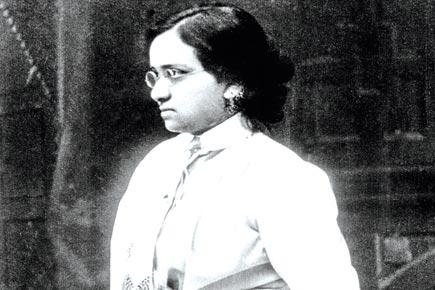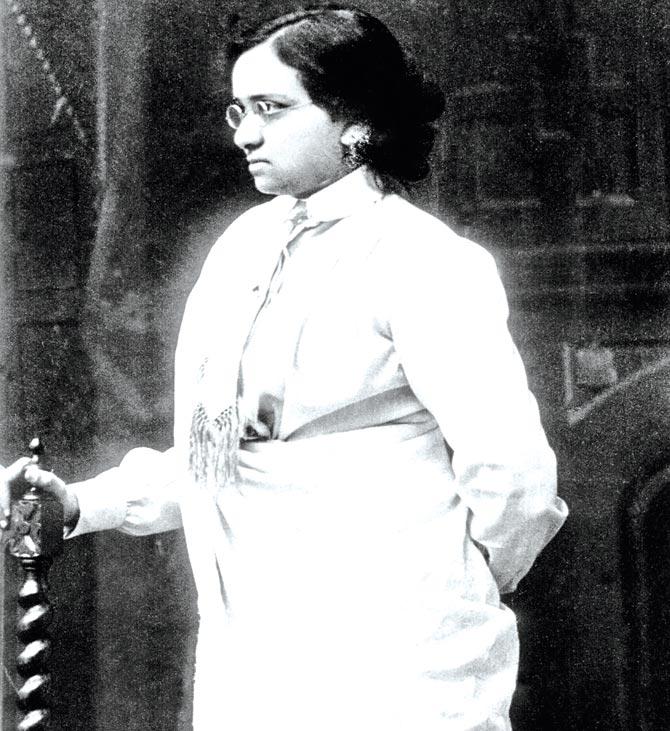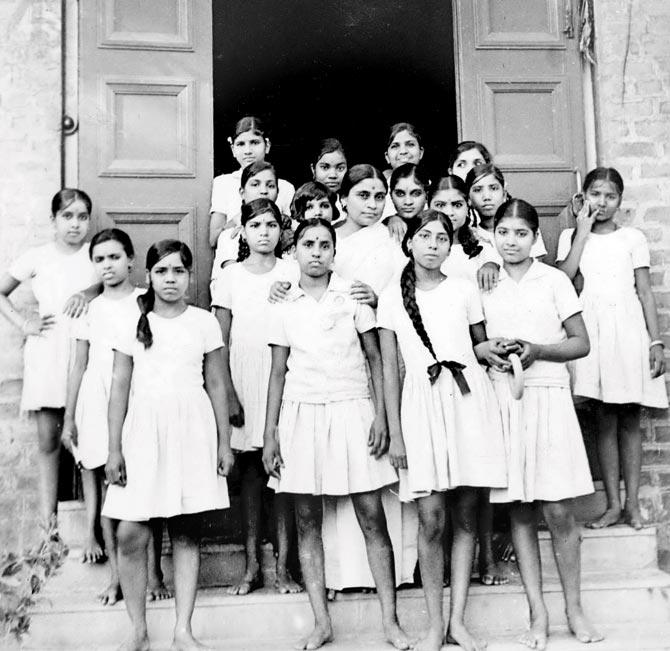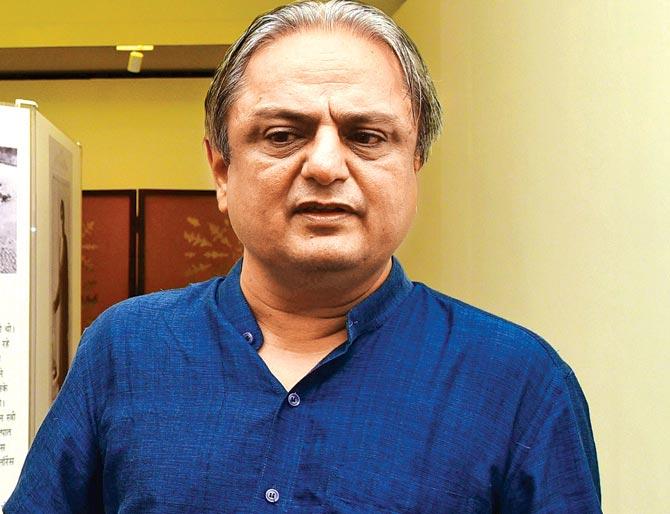The story of Anasuya Sarabhai, a member of India's famous industrialist family, who led the textile workers' movement in Ahmedabad, is being told via a series of photographs at CSMVS

 With the taste of melt-in-the-mouth khandvi, jalebi, fafda and the ring of "kem cho", an exhibition opened last week in the city, marking the first collaboration between Ahmedabad's Sarabhai Foundation and the Chhatrapati Shivaji Maharaj Vastu Sangrahalaya (CSMVS).
With the taste of melt-in-the-mouth khandvi, jalebi, fafda and the ring of "kem cho", an exhibition opened last week in the city, marking the first collaboration between Ahmedabad's Sarabhai Foundation and the Chhatrapati Shivaji Maharaj Vastu Sangrahalaya (CSMVS).
ADVERTISEMENT

Founder of Ahmedabad's Textile Labourers Association (TLA), Anasuya Sarabhai. Pics/Sarabhai Foundation
Shuddering at the stereotyping of Gujaratis, Mihir Bhatt, an architect and planner, and son of activist and Gandhian, Ela Bhatt, walks us through tall panels. Printed with archival photographs, these panels narrate the tale of a feisty woman who came to lead Ahmedabad's textile labour movement. The exhibition is titled Motaben, Gujarati for elder sister, as Anasuya Sarabhai was fondly known.
Designed by Mihir's son, Somnath — a student of design studies — the exhibition contains Anasuya's words as well, from an original long interview conducted by her niece Gira Sarabhai. Gira, who co-founded the National Institute of Design along with brother Gautum, is the Sarabhai storyteller. After all, she chairs the Sarabhai Foundation and set up the Sarabhai Archives.

Ela Bhatt (centre, in saree), founder of SEWA, was a teacher at Kanyagruha, a school for daughters of textile workers set up by Anasuya Sarabhai
Ela, now 83, is seen in one of the photographs, surrounded by a group of girls at Kanyagruha, a school started by Anasuya in 1927 for daughters of Ahmedabad's textile workers. "One of the best things about Motaben," Mihir says, "was that she never forced anyone into anything. In the 1950s, when Elaben — a young college graduate then — came to work with Motaben, she did not cover her head as was the custom in those days among women working at the Textile Labourer's Association (TLA). While some objected to it, Motaben wished Elaben to do as she wished. With Motaben, you had the freedom to grow."
Much of Anasuya's spirit is captured in Ela, who founded the Self-Employed Women's Association of India (SEWA) in 1972 — the year Anasuya passed away. The exhibition is about Motaben 'as known by Ela Bhatt'.
Workers and owners
As one of the closest associates of Anasuya, Ela's story could be one of the definitive accounts of a member of one of the leading industrialists in the country. Sister to Ambalal Sarabhai, the doyen who owned textile mills, Anasuya founded the TLA in 1920, when she was 35 years old. "Ambalal was a mill owner, yet Anasuya led the mill workers' movement," says art historian Dr Devangana Desai, trustee at both CSMVS in Mumbai and the Sarabhai Foundation.

Mihir Bhatt
At the exhibition is a photograph of the Sarabhai siblings back in their childhood. Shot in a studio, Anasuya looks rather studious with her nose buried in books and the end of her sari drawn around her head. A sleepy Ambalal, five years her junior, is seen slumped in a baby walker. In their adulthood, the two were placed at opposite ends of the spectrum, each leading enterprises that are usually at odds with the other.
We wonder what their dinner conversations were like. Were there heated arguments that led to bitterness? With their supposedly opposing opinions, how could they have even borne each other under the same roof of their home Shanti Sadan? Devengana puts our doubts to rest. "Motaben, Ambalal and Mahatma Gandhi used to have dinner together and discussions were usually about the condition of the workers," she says.
Gandhi's association with Anasuya was highlighted in the years following 1917, the plague year in Ahmedabad, after which warpers demanded a "Plague Bonus". Requested by them to attend a meeting, Anasuya found herself facing 500 workers, helping them draft a notice demanding a raise from 12 pai to 15 pai. Mill owners dismissed these notices, and on December 4, a strike began. On Day 21, Gandhi went on a hunger strike on their behalf. Negotiations were held on the rooftop of Shanti Sadan. Anasuya refused to bend for a settlement of 14.5 pai. It was 15, or nothing.
Going places
The TLA was formed soon after. While this strike saw the support of Gandhi, Mihir explains that Anasuya had successfully led two strikes before 1917. "We have an increasingly Delhi-centric view of the freedom struggle, and focus much on his-story, not her-story," he says. In his presentation at the inauguration of the exhibition (which began with gifting dignitaries yarn garlands) Mihir said here was a rare brother-sister story.
The exhibition was first shown at Shanti Sadan, when SEWA turned 40 in 2012. After travelling to New Delhi, it has now come to Mumbai, before possible plans of taking it to Geneva, the centre of the trade union movement. A permanent gallery has now been set up in Shanti Sadan, dedicated to Anasuya, and open to the public by appointment.
"There are several things pertinent to Mumbai that are to be learnt from Ahmedabad's labour history and the mill workers' lives. And here is the story of a woman with so much power — she led almost two lakh workers — but claimed no position," says Mihir, as he continues talking about an MP and over dozen women leaders from Myanmar, who are currently visiting Shanti Sadan. There are cues to be picked up in Ahmedabad for the labour movement of a country recently freed from the shackles of tyranny. It remains to be seen when our history textbooks will talk about Anasuya.
 Subscribe today by clicking the link and stay updated with the latest news!" Click here!
Subscribe today by clicking the link and stay updated with the latest news!" Click here!






